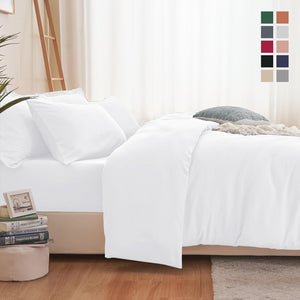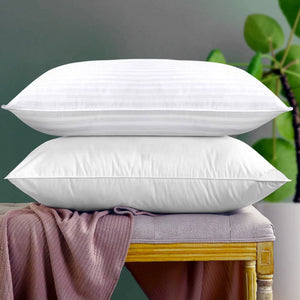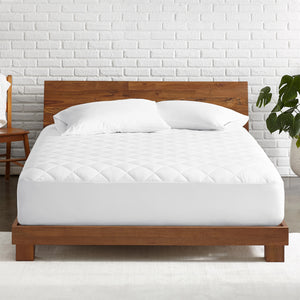How To Choose Your Child’s First Bed: A Guide For Parents
When it’s time for your child to move out of their cot, you might wonder about the best bed for their next stage. With various options available, it’s essential to consider your child’s age, size, and specific needs. This guide will help you navigate the choices and ensure that the bed you select is safe, comfortable, and just right for your child.
What Age Should A Child Have Their Bed?
Transitioning from a cot to a bed typically occurs between 18 months and 3 years. However, every child is different. Some might be ready earlier, while others might need more time. Signs that your child is ready for a new bed include:
- Climbing Out of the Cot: If your child frequently climbs out of the cot, it might be time for a more secure sleeping arrangement.
- Potty Training: If your child is potty trained or in the process of being trained, a bed might be more practical than a cot with high sides.
- Growth Spurts: As your child grows, a cot might no longer be spacious enough for them.
Types Of Toddler Beds

When choosing a bed for your toddler, you have several options. Here’s a rundown of the most common types:
Cot Beds
Cot beds are versatile options that can often be converted into toddler beds. They offer a similar feel to cots but with more space and a lower height, making them suitable for older toddlers.
- Pros: Converts into a toddler bed, usually with adjustable heights.
- Cons: It may last less time than other bed types.
Toddler Beds
Toddler beds are designed specifically for cot-to-bed transitions. They are lower to the ground and often have side rails for added safety.
- Pros: Lower height, often features fun designs.
- Cons: Limited lifespan before needing to upgrade to a single bed.
Single Beds
Single beds provide more space and can be used for many years as your child grows. They are a good long-term investment but may not be as accessible for young children.
- Pros: Long-lasting, ample space for growth.
- Cons: Higher height may require a bed guard for safety.
Bunk Beds
Bunk beds are ideal for siblings sharing a room or if you want to save space. They come in various designs, including additional features like desks or storage.
- Pros: Space-saving, can be fun for kids.
- Cons: Requires careful consideration of safety, especially for the top bunk.
Cabin Beds
Cabin beds often include built-in storage or play areas underneath, making them a great choice for making the most of smaller spaces.
- Pros: Integrated storage or play space, space-saving.
- Cons: It can be more expensive and unsuitable for young toddlers.
Kids' Bed Sizes By Age
Selecting the right bed size is crucial for comfort and safety. Here’s a general guide to help you choose:
- Cot Bed: Suitable for ages 18 months to 4 years. The mattress size is typically 70 x 140 cm.
- Toddler Bed: This bed is ideal for children aged 2 to 5. The mattress size is generally 70 x 140 cm or 75 x 190 cm.
- Single Bed: This bed is suitable for children between the ages of 3 and 18. The standard mattress size is 90 x 190 cm or 90 x 200 cm.
- Bunk Bed: This bed is designed for children aged 6 and up. Mattress sizes vary, but 90 x 190 cm or 90 x 200 cm are common.
How To Measure The Right Bed Size For Your Child?

To ensure you choose the right bed size, follow these simple steps:
- Measure Your Child: Use a tape measure to determine your child’s height and width. Add a few inches to their measurements to allow for growth.
- Consider the Room Size: Ensure the bed fits comfortably in your child’s room and has enough space for them to move around.
- Check Bed Dimensions: Compare your child’s measurements with the bed’s dimensions. Ensure there’s enough space for them to sleep comfortably without feeling cramped.
How To Choose A Mattress For Your Kid’s Bed?
Choosing the right mattress is just as important as selecting the bed itself. Here are a few tips:
- Firmness: A mattress that is too soft can pose a risk for younger children, so opt for a firm, supportive mattress. It should be comfortable but not overly soft.
- Material: If your child has allergies, look for hypoallergenic materials. Memory foam and pocket spring mattresses are popular for their support and comfort.
- Size: Ensure the mattress fits snugly in the bed frame. A mattress that’s too small or too large can be a safety hazard.
- Breathability: Good airflow helps keep the mattress fresh and reduces the risk of overheating during sleep.
How To Ensure The Bed Is Sturdy And Stable?
Safety is paramount when choosing a bed. Here’s how to ensure the bed is sturdy and stable:
- Check for Safety Certifications: Ensure the bed meets UK safety standards and has been tested for stability and durability.
- Inspect the Construction: Look for solid construction and avoid beds with sharp edges or loose parts. Ensure that the bed frame is robust and doesn’t wobble.
- Secure the Bed: If you use a bed with a top bunk or elevated platform, ensure it’s properly anchored and has guardrails in place.
- Regular Maintenance: Regularly check the bed for any signs of wear and tear or loose screws and bolts.
How To Keep The Mattress Clean And Hygienic?

A clean mattress is essential for your child’s health. Here’s how to keep it in top condition:
- Use a Mattress Protector: A waterproof mattress protector protects against spills and accidents.
- Regular Cleaning: Vacuum the mattress regularly to remove dust and allergens. Spot-clean any stains with mild detergent.
- Air Out the Mattress: Allow the mattress to air out periodically to prevent mould and odour buildup.
- Follow Manufacturer’s Instructions: Always follow the care instructions provided by the mattress manufacturer for specific cleaning recommendations.
Toddler Bedding Accessories

Adding the right accessories can make your child’s bed more inviting and comfortable. Consider the following:
- Bedding Sets: Choose soft, breathable fabrics like cotton. Opt for fun, colourful designs that match your child’s interests.
- Pillows: Ensure that pillows are age-appropriate. For toddlers, a small, firm pillow is usually best.
- Blankets and Duvets: Lightweight blankets and duvets are ideal. Ensure they are easy to wash and suitable for your child’s room temperature.
- Bed Guards: Bedguards can help prevent falls and provide a sense of security for younger children.
How To Help Your Child Transition To A New Bed?
Transitioning to a new bed can be a big change for your child. Here’s how to make it smoother:
- Involve Your Child: Let them help choose the bed and bedding. This can make them feel more invested in the new bed.
- Maintain a Routine: Keep bedtime routines consistent to provide reassurance and stability.
- Be Patient. Your child might take time to adjust. Offer plenty of comfort and encouragement during the transition.
- Positive Reinforcement: Praise your child for sleeping in their new bed and celebrate their progress with small rewards or extra bedtime stories.
How To Keep The Kid's Bed In Good Condition?
To ensure your child’s bed remains in good condition:
- Regular Cleaning: Keep the bed frame and mattress clean by wiping them down with a damp cloth and vacuuming regularly.
- Regular Checks: Inspect the bed for signs of wear and tear and promptly address any issues.
- Follow Care Instructions: Adhere to the care instructions for both the bed frame and mattress to ensure proper maintenance.
- Proper Maintenance: Regularly clean the bed and bedding to keep it fresh and hygienic.
- Safety First: Ensure all safety features, such as bed guards and railings, are in good working order.
Final Thoughts On Choosing The Perfect Bed For Your Toddler
Choosing the right bed for your child is a significant decision that can impact their comfort and safety. By considering factors such as age, bed types, size, and mattress selection, you can make an informed choice to support your child’s growth and development. Remember to prioritise safety, comfort, and durability in your decision-making process.
FAQs
What Is the Best Age to Move a Child to Their First Bed?
The best age to transition from a cot to a bed is between 18 months and 3 years. However, every child is different, so look for signs of readiness.
How Do I Know If My Child Is Ready for a Bigger Bed?
If your child is climbing out of their cot, showing signs of needing more space, or has outgrown their current bed, it might be time for a bigger bed.
Are There Any Beds to Avoid for Young Children?
Avoid beds with sharp edges, high beds without guard rails, and those too high off the ground. Safety should always be a priority.
How Often Should I Replace My Child’s Bed?
Replace your child’s bed when it no longer meets their needs or shows signs of wear and tear. Consider replacing mattresses every 5-7 years or sooner if they become uncomfortable.
What Are the Best Bed Safety Features for Toddlers?
Look for beds with low height, sturdy construction, safety rails or guards, and rounded edges to minimise the risk of injury. Ensure the bed is free from loose or small parts that could be a choking hazard.
Choosing your child’s first bed doesn’t have to be a daunting task. With a little research and thoughtful consideration, you can find a safe, comfortable, perfect bed for your child’s needs.









